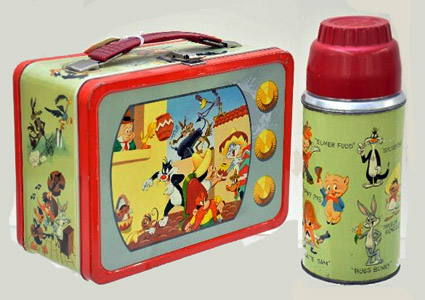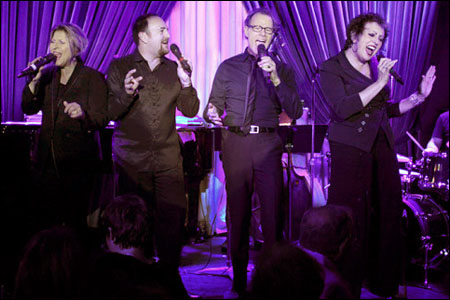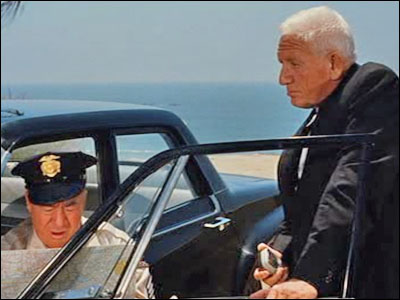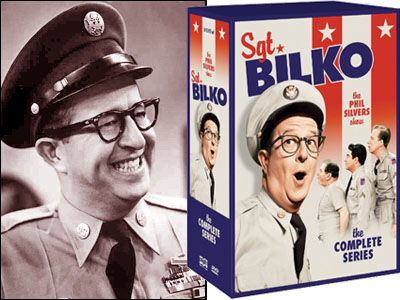Continuing from yesterday, here's a piece that first turned up on this here blog on 7/3/06. If you've been visiting here that long, I presume you've forgotten it and could stand to read it again…

As you may remember, they had just opened the long-awaited cafeteria at Westwood Elementary School. Foolishly — I was young at the time, remember — I'd assumed the cafeteria would be like other cafeterias that I visited with my parents…places where you had some selection as to what you'd eat. Not so with the one at my school. There was one meal each day, take it or leave it — and if you took it, you had to eat it.
Students were deputized to police the lunchroom and hover around the trash cans…and if someone didn't finish their lima beans or their Spanish rice, they were sent back to the table to clean the plate. This was among my worst nightmares: Being forced to eat that which my instincts told me I shouldn't eat. All my life, I had problems with certain foods. I later found out from doctor-type people that it was a complex array of food allergies and intolerances but even at the time, I knew that if I ate raw tomato or lettuce, for instance, I was in for stomach cramps, pains, upchucking and other unpleasantness.
A great lie that was told to kids back then — and is probably still told to some — is that you always had to eat everything put in front of you. No, you most assuredly don't. Some foods don't agree with some stomaches and it's foolish to regard Not Wasting Food as more critical than your own health. It also, of course, isn't good for one's weight to approach every meal with the idea that you have to stuff every scrap they give you down your throat. If early on, I'd gotten in the habit of stopping when I felt I'd had enough, I might not have had to recently undergo Gastric Bypass Surgery.
I love cafeterias — the kind where you can see the food and then decide what to eat. There are no surprises…no finding out that the sandwich — automatically and without warning — comes with cole slaw on it or that the fried chicken is unexpectedly battered in shredded coconut or that the veal parmesan includes a gratuitous, offending layer of eggplant. You can even usually see if the portion size is more than you want to swallow. I also have always favored cafeterias because in every "real" one I've ever been in, there's a person standing there who'll carve slices of fresh, just-out-of-an-oven turkey for you, right off the bird. This may be my favorite meal in the world and when I heard my school was opening a cafeteria, I thought, "Oh boy! I can have sandwich of real, just-cooked turkey every day for lunch." It was a shock to learn that I could not.

I recall the horrifying sequence of events with a shudder. They announced on a Friday that the new cafeteria would begin serving lunch on Monday, and many students cheered the end of hauling in mom-made peanut butter-and-jelly concoctions. I told my mother not to bother filling my trusty lunch box (which may then have been the model seen in the above picture). I would henceforth be dining at the school cafeteria, which I imagined looking like the Ontra, the cafeteria in Beverly Hills that my parents and I frequented. Monday morn, I felt almost naked, walking to school without a lunch pail.
Then, around 10 AM, the vice-principal came in and read a little memo about the cafeteria, hailing its creation and telling us all how to line up for it and how to behave and to do a lot of the same things advised in this film. Everything sounded fine until she got to the part that said that the meal today would be Chicken Tostadas. I waited to hear the other options but there weren't any. It was Chicken Tostada or go hungry. Furthermore, she told us about the monitors who'd make sure you didn't leave the cafeteria until you had completely consumed every last bit of your Chicken Tostada.
I wasn't sure exactly what a Chicken Tostada was but I had the chilling sense it meant trouble. During a break, I turned to the classroom dictionary, looked up "tostada" and read that it was "a tortilla fried until crisp, garnished with fillings including shredded lettuce, salsa and other things Mark can't eat." At least, I think it said something like that. I also looked up "cafeteria" and found the definition, "A self-service restaurant in which food is displayed on counters, allowing a choice from among different selections." For a moment, I thought of chasing the vice-principal down the hall and showing her proof that, according to the Webster's people, my school had the whole concept of a cafeteria wrong…but I had the feeling it wouldn't do a whole lot of good.
I went without lunch that day…and don't think that was easy. During lunch period, they expected to see you dining either in the cafeteria or at our assigned lunch benches, and I couldn't show up at the latter, sans food without facing embarrassing questions and probably even more embarrassing explanations…so I hid out in the Boys' Room until the bell rang that said we could go out and play Dodgeball. The next morn, you could find me carrying my once-again-trusty lunch box to school.
Interestingly, the new cafeteria was a flop. Most of my friends tried it. Few of them liked it. I got the feeling that the only ones eating there were those with mothers who didn't want to bother making sandwiches in the morning. Those poor kids had to go in and eat the Chicken Tostada, which was a weekly feature and which was disliked even by kids who could and did eat Chicken Tostadas in other restaurants.
One day, the vice-principal came around to each class for a brief discussion as to how they could get more pupils to patronize the new, expensive-to-build cafeteria. What struck me about the dialogue was that she more or less ruled out "the food is bad" as a reason. When someone suggested this, she launched into a little speech about how it was necessary to keep prices down so that every student could afford to eat there…and for what they charged, that was the best food that could be offered. With that off the table (so to speak), she pressed us for other reasons. What if we staggered the times different classes were dismissed for lunch so the lines at the cafeteria would be shorter? What if the plastic silverware was at the end of the line instead of the beginning? The one comment no one was allowed to make was that the food stunk, and I could see that that was the only thing on everyone's mind.
Finally, I raised my hand and made a little speech, ever so politely, about how I didn't understand why a place that served only one meal was called a "cafeteria." I read the definition and suggested that maybe, just maybe, our cafeteria could offer a choice. Maybe?
The other students actually applauded. I had found a way to skirt the ban on suggesting the quality of the food was the problem. The vice-principal listened and said, "Hmm…that might be worth looking into," and I wondered why a grown-up needed a ten-year-old boy to suggest to her that maybe the reason no one was buying the product was that they didn't like the product. I mean, I'd figured that out a few years earlier when my friend Johanna and I had run a lemonade stand with neither repeat business nor enough sugar in the lemonade.
But I'll say this for the vice-principal: She took my suggestion, looked into it and — sure enough — the cafeteria began experimenting with offering a choice of entrees. For instance, the first day they did this, you could have your choice of the Chicken Tostada or the Beef Tostada. I went for the peanut butter-and-jelly on white and so did almost everyone else.







